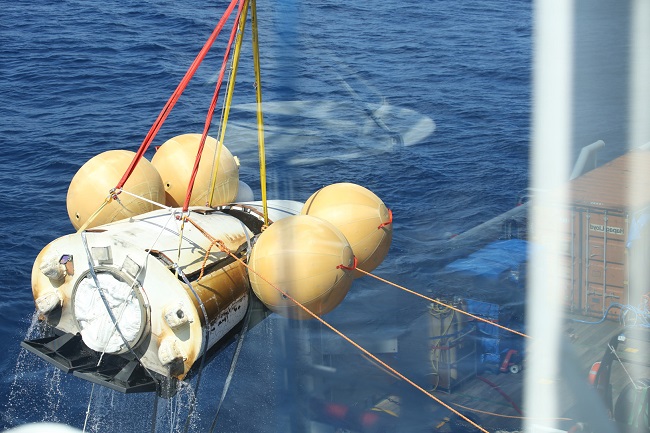The Vega VV04 rocket with IXV on the launch pad. Image via ESA-M. Pedoussaut, 2015
The European Space Agency’s (ESA) Intermediate eXperimental Vehicle (IXV) to test for future manned missions into deep space has successfully returned to Earth with a landing described as ‘flawless’.
The un-manned craft launched on Wednesday was part of the ESA’s research into the effects of re-entry into the Earth’s atmosphere on the craft, but also to see how it would cope if the space agency are to one-day send astronauts to space in a re-usable craft.
Aside from two previously designed launch modules, the ESA have arguably far-less experience when it comes to astronaut re-entry with both the US and Russia having much more experience over the last few decades.
Now, the ESA have confirmed, the future is looking bright for Europe and its space adventures as the IXV made a ‘flawless re-entry’ just off the coast of the Galapagos islands having decelerated from hypersonic speed entering the planet’s atmosphere at a rate of 7.5km/s.
Also as planned, the IXV began sending back vast amounts of data from each of its 300 sensors that covered the craft as it made its descent that began sending back to the ESA’s mission control at the ALTEC Advanced Logistics Technology Engineering Centre in Turin, Italy.

Recovery of ESA’s Intermediate eXperimental Vehicle in the Pacific Ocean just west of the Galapagos islands. Image via ESA–Tommaso Javidi, 2015
‘A new chapter for ESA’
Crews awaiting its arrival were able to collect the IXV thanks to balloons that deployed from the craft so as to keep it afloat in the Pacific Ocean where it will eventually be returned to Europe for detailed analysis in the ESA’s technical centre, ESTEC, in the Netherlands.
However, it is expected that the first results to come from the craft’s performance and the future of manned re-enterable craft will come in six weeks’ time.
All of this data will be crucial in determining the fate of ‘Pride’ – the Programme for Reusable In-Orbit Demonstrator for Europe – that in 2020 hopes to create a space shuttle-style craft that astronauts could land on an aircraft runway.
“IXV has opened a new chapter for ESA in terms of re-entry capabilities and reusability,” said Jean-Jacques Dordain, the ESA’s director general.
“ESA and its member states, together with European space industry, are now ready to take up new challenges in several fields of space transportation, in future launchers, robotic exploration or human spaceflight.”